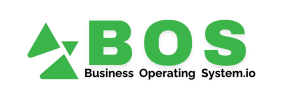Exploring the Top 3 Business Operating Systems: A Comparative Guide
In the diverse landscape of business operations, selecting an effective Business Operating System (BOS) can be crucial for driving efficiency and achieving strategic goals. With several systems available in the market, choosing the right one can be daunting. In this blog post, we'll delve into the top three business operating systems, outlining their pros and cons, and providing insights into which type of company might benefit most from each system.
1. EOS (Entrepreneurial Operating System)
Overview
EOS is designed to provide entrepreneurs and small to medium-sized businesses with a set of simple, practical tools and methodologies that streamline operations and foster growth.
Pros Simplicity and Accessibility
EOS is straightforward, making it accessible for smaller teams and businesses that want to quickly implement a structured system without excessive complexity.
Focus on Vision and Traction
The system emphasizes creating a strong vision and executing it effectively, with tools like the Vision/Traction Organizer.
Team Alignment and Accountability
EOS promotes alignment and accountability through regular meetings and scorecards, ensuring everyone is on the same page and working toward common goals.
Cons
Limited Scalability
While great for smaller organizations, EOS may not suffice for larger enterprises with complex needs across multiple departments.
Requires Dedicated Adoption
Successful implementation requires commitment from the leadership team and may involve a cultural shift.
Best For
Small to medium-sized businesses seeking a straightforward, easy-to-implement system focused on vision alignment and accountability.
2. Scaling Up (Rockefeller Habits)
Overview
Developed by Verne Harnish, Scaling Up is based on the principles of the Rockefeller Habits and is designed to help mid-sized companies scale efficiently by focusing on key business areas: People, Strategy, Execution, and Cash.
Pros
Comprehensive Framework
Addresses all critical aspects of scaling a business, from talent management to financial planning.
Focus on Strategic Planning
Encourages companies to regularly review and refine strategic priorities, fostering a proactive growth mindset.
Tools for Execution and Performance
Provides practical tools and routines that help improve execution and performance across the organization.
Cons
Complexity
The system can be complex to implement and may require significant training and commitment from the entire organization.
Time-Intensive
Realizing the full benefits of Scaling Up may take time and persistent effort, especially if starting from scratch.
Best For
Mid-sized businesses looking to scale efficiently with a comprehensive, structured approach covering all major business areas.
3. OKR (Objectives and Key Results)
Overview
OKR is a goal-setting framework popularized by companies like Google, focusing on defining clear objectives and measurable key results to drive organizational performance and alignment.
Pros
Agility and Flexibility
Allows for rapid adjustments to goals and strategies, fostering a dynamic and adaptable work environment.
Alignment and Transparency
Promotes transparency by aligning individual objectives with the organization's overall goals, enhancing motivation and focus.
Measurable Outcomes
Encourages a results-oriented culture with a clear emphasis on measurable achievements.
Cons
Requires Continuous Monitoring
Effective use of OKRs demands constant tracking and adjustments, which can be resource-intensive.
Risk of Overemphasis on Metrics
There's a potential risk of focusing too much on key results, possibly overlooking qualitative aspects of performance.
Best For
Organizations of all sizes that thrive on innovation and need a flexible, dynamic framework to adapt to rapid changes in market conditions.

Conclusion
Choosing the right Business Operating System depends on your organization's size, growth phase, and specific needs. EOS provides a simple, practical framework for smaller businesses looking to gain traction and align their vision. Scaling Up offers a comprehensive approach for mid-sized companies aiming to scale efficiently. OKR delivers a flexible, dynamic framework suited to organizations seeking to foster innovation and adaptability.
Ultimately, the key to selecting the right BOS lies in understanding your organization's unique challenges and goals, and how each system's strengths align with them. By taking these factors into account, you can implement a business operating system that optimizes efficiency, aligns your team, and propels your organization toward sustained success.
Subscribe now.
Sign up for our newsletter to get the most interesting stories of the day straight to your inbox before everyone else

We help teams improve Productivity by implementing no-code software solutions
A Division of
Execute Strategy, Inc.
Copyright © Execute Strategy Inc. O/A Achievan 2023







